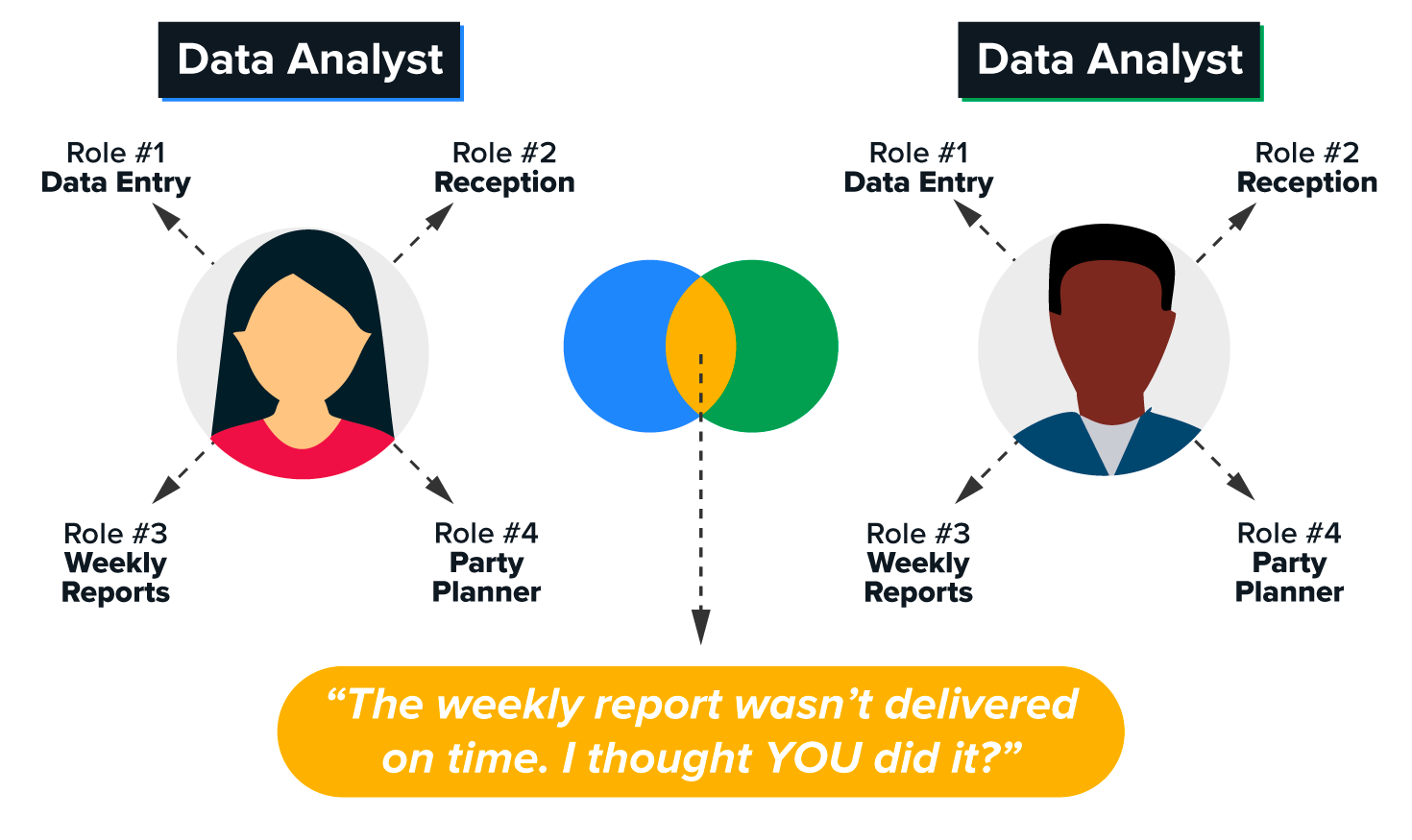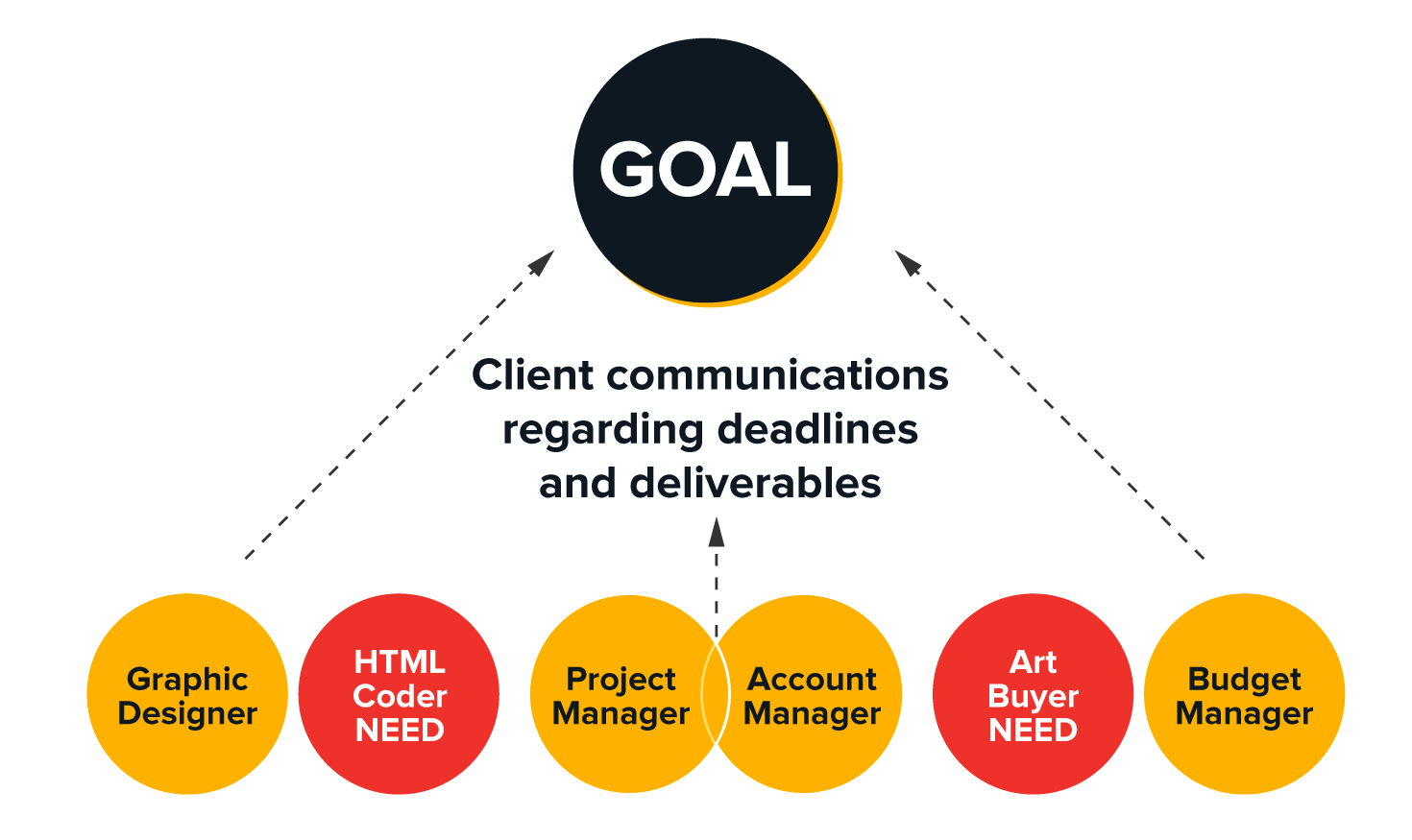Table of Contents |
A role is defined as a group of highly related work activities and responsibilities generally performed by a single individual. Every member of a team will play one or more roles, work functions, or a business function. For individuals playing multiple roles, like in the example below, those roles may be closely related or very different.
EXAMPLE
An IT project manager might have a few different roles.
In a smaller organization, it's common to find individuals playing more than one role. Their roles may also change more frequently. As you can see above, the person's job title is IT project manager, but her roles are different. Her job title is the umbrella for the roles that she plays, and the responsibilities within those roles.
Roles also change across different industries. Someone in a different industry has very different responsibilities within their roles that bubble up to their job title. Roles are usually formally assigned. This means you would probably find these roles in a job description. In the image below is a data analyst (see Section 2). Notice that she has three formal roles that are closely related. However, there are other informal roles that may be taken on voluntarily by employees. In this instance, she is also the person who plans all the office birthday parties.
EXAMPLE
This business analyst is also the party planner.Having a recognized and valued role improves employee confidence and commitment to their work. Clear roles improve efficiency because everyone knows what they're doing.
When roles are too close, the work may become inefficient due to unclear responsibilities. You can imagine that this would be a really frustrating environment to work in.
EXAMPLE

What happens when you have the opposite issue? What happens if there's too much space between two roles? Well, just take a look at an example of this with a graphic designer and a marketing manager:
EXAMPLE

You can see in the image above that the marketing manager is responsible for leading the team's creation of a marketing plan. This may involve some deliverables by the graphic designer. If he doesn't loop her in, it's very likely that a task is going to be left undone or a goal will be missed. This will result in high frustration on both sides.
If you're a team leader, how do you analyze your team's roles? The first step is to identify your shared goal. Then you can generate a list of roles needed to achieve it. Next, you will compare that to the team capacity, the number of people, and the bandwidth that they have.
You want to see if there are any gaps relative to expertise. Take a look at this diagram:

In this instance, there are some gaps. An HTML coder and an art buyer are needed. Those skills are not represented in this current team.
Take a look at the project manager and account manager. These two roles are highly related, or interdependent. Depending on the workload, this role can be filled by one person, or it can be two individuals who work well together.
This is also where you can check to see if you need more roles than the team can reasonably handle. You want to make sure that your team members are not overworked. It's important to check their individual bandwidths as well, to see if you need to add more or fewer roles. Every team comprises strengths, and you want to make sure the team is efficient.
Once all these roles have been analyzed at the level of the team as a whole, they can be assigned to individuals. Not only do you want to match these roles with the best fit in terms of a person's skill set but also with those individuals' interests and professional development goals.
You want feedback from your team members. It is important to consult them relative to the role and responsibility assignment as these decisions are being made. You don't want to approach them after the fact to say: "Guess what? You're going to be our graphic designer."
Source: THIS TUTORIAL WAS AUTHORED BY KELLY NORDSTROM FOR SOPHIA LEARNING. PLEASE SEE OUR TERMS OF USE.